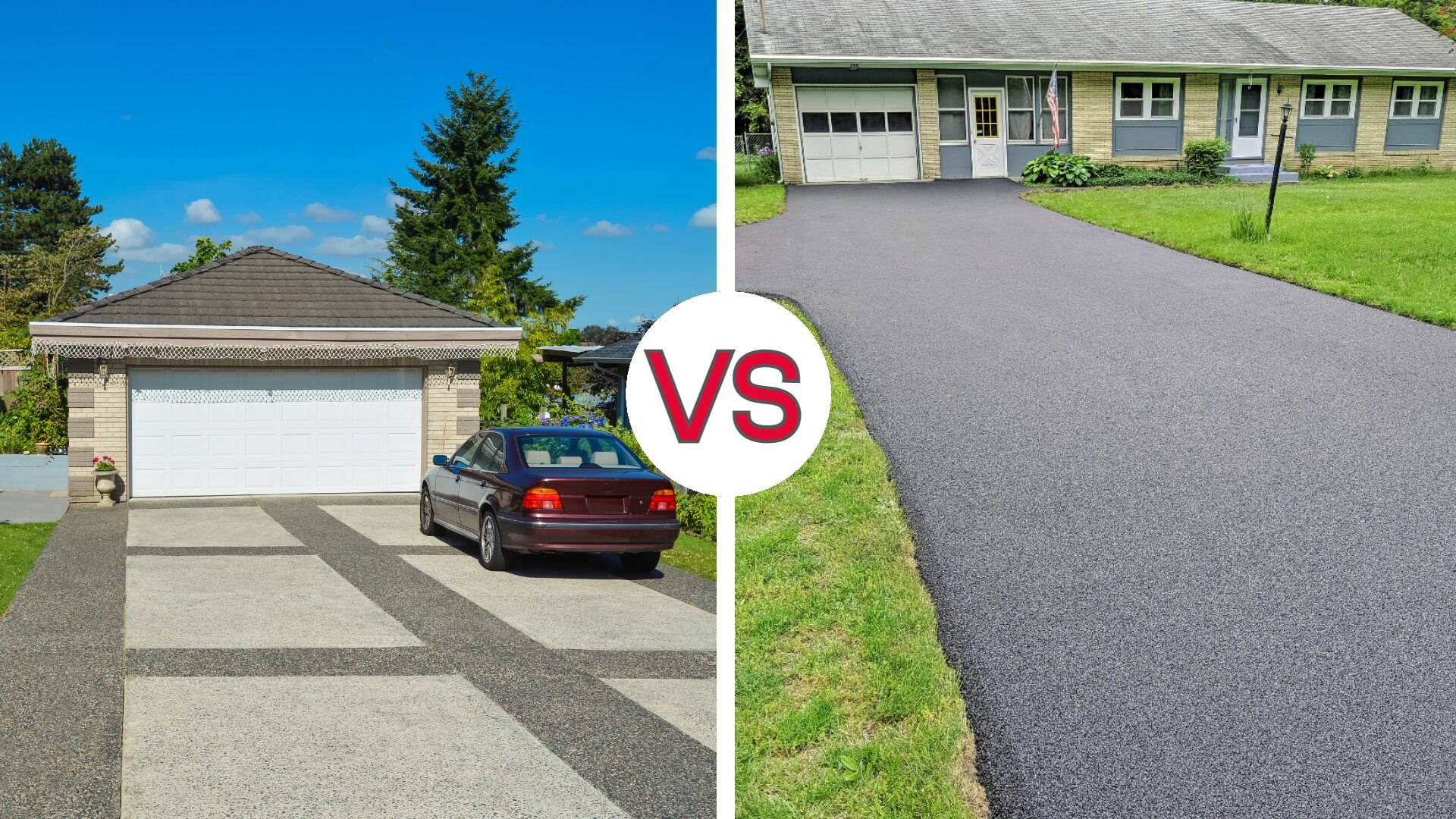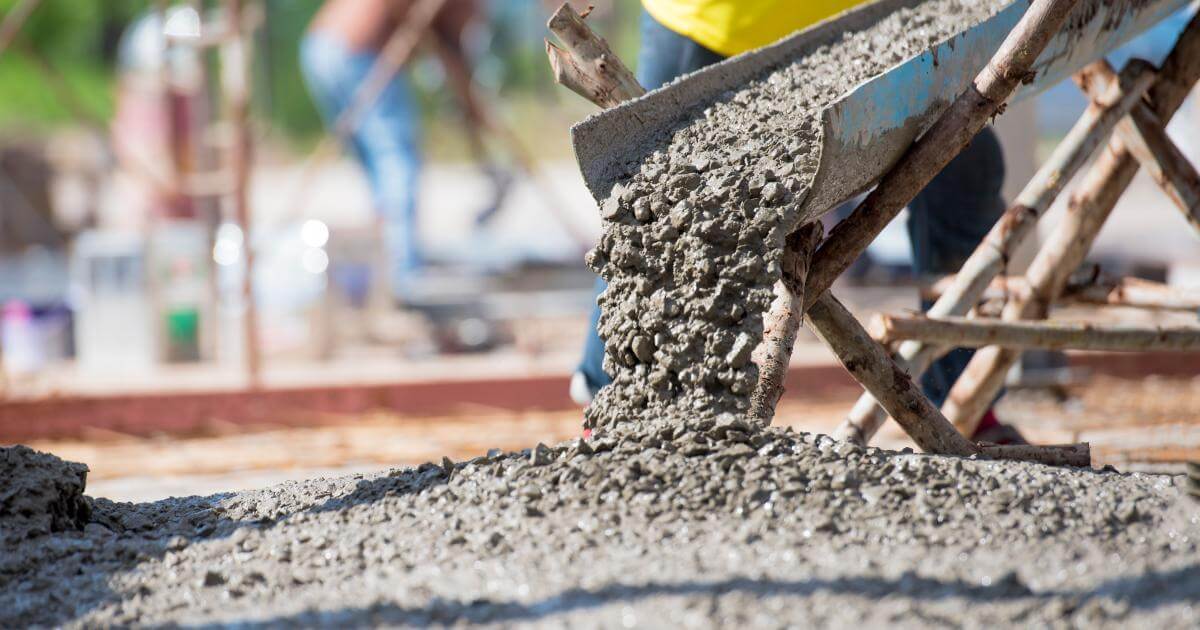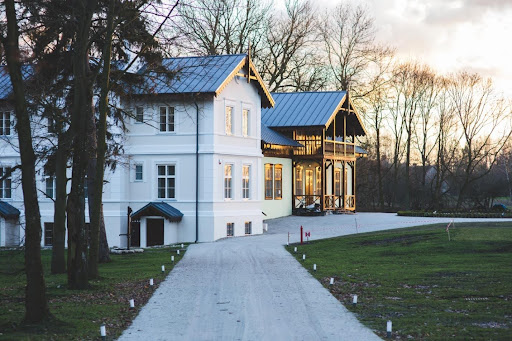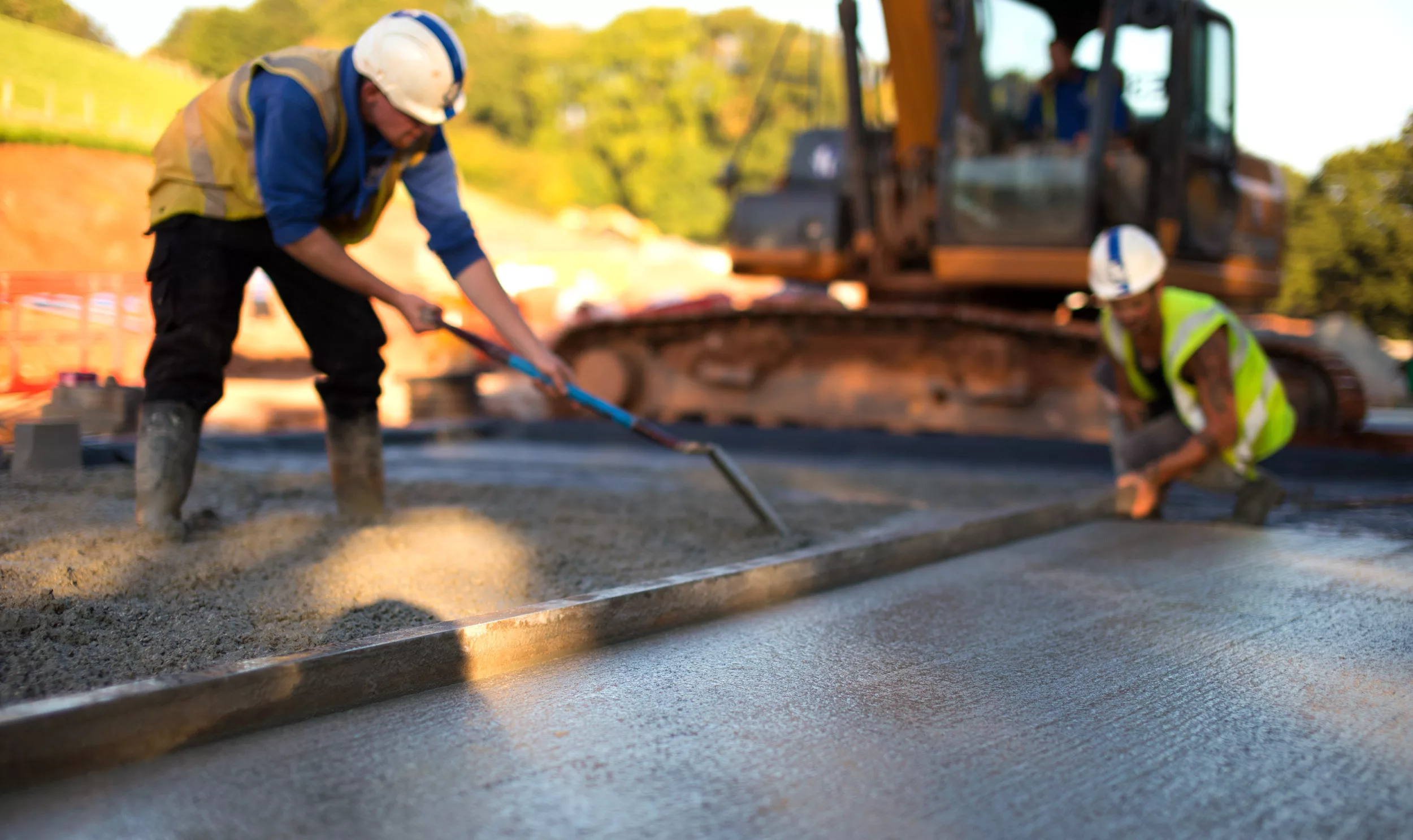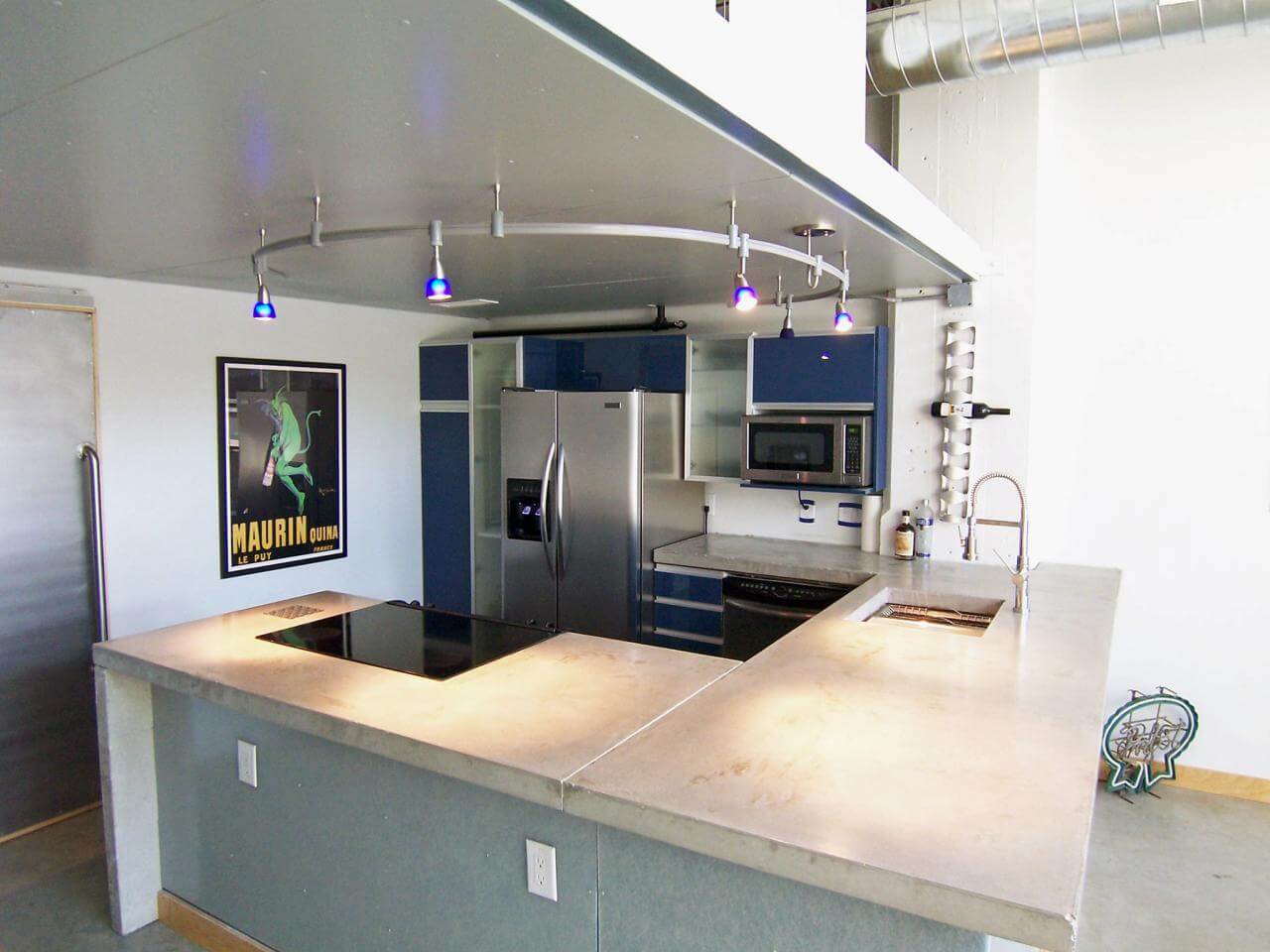
Concrete countertops may look like huge slabs, but in actuality, they are normally only 1 1/2 to 2 inches thick. The illusion that they are much thicker slabs is usually the effect of a drop-front edging on the countertop. Still, these are very large countertops, weighing 19 to 25 pounds per square foot. Installers sometimes require to reinforce cabinetry and sometimes also the floors to support the substantial weight.
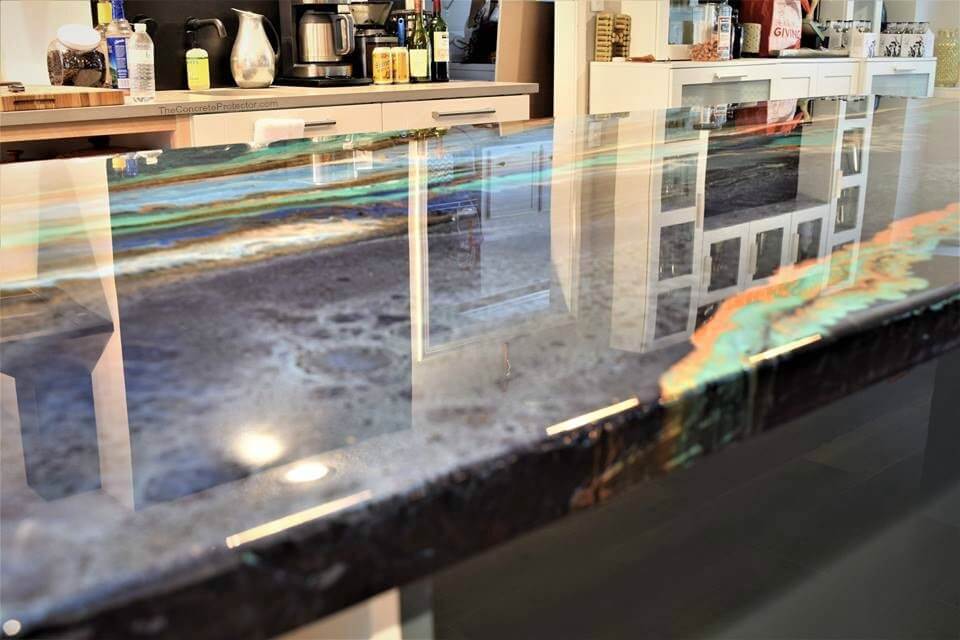
While concrete countertops are sometimes created and poured on-site, more frequently they are fabricated in workshops after a technician uses precise measurements of your kitchen area and presents all finish options with you. In the shop, models are built and the countertop is poured, finished with whatever sink cutouts, coloration, or additives are demanded.

Read here about How much concrete do I need?
During fabrication, the countertop slabs are usually strengthened with fiber or metal mesh of some variety to give them strength and rigidity. After fabrication, the countertop is permitted to cure fully, and the surface may be filed and polished to whatever finish the client has asked. Some kind of sealer is applied, usually a very hard epoxy. Once curing and finishing are complete, an installation crew accurately delivers the countertop to the worksite and fixes it.
Concrete Countertops Pros and Cons
Pros
- They can be customized and shaped to any kitchen spaces or areas.
- Concrete doesn’t scratch and is impervious to heat.
- Materials like glass fragments, stones, shells, and fiber-optic lights can be installed.
- Concrete molds for a very durable and long-lasting surface.
- The surface is easy clean-up and sustain, provide regular sealing is done.
- Concrete countertops generally develop real estate value as a premium material
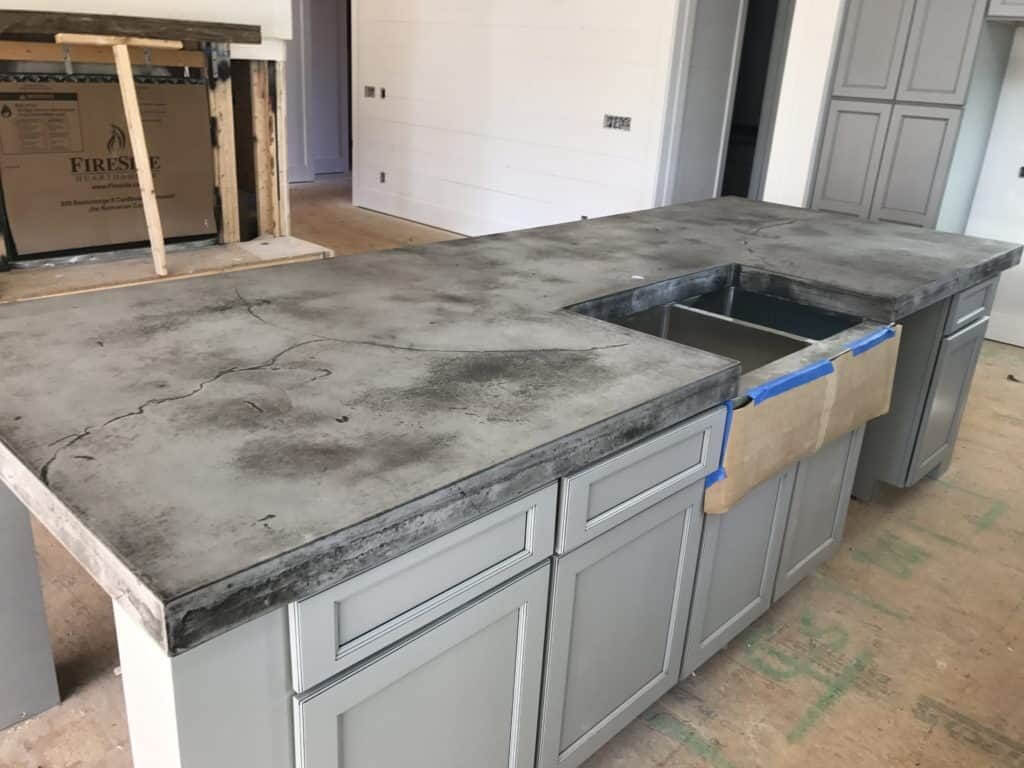
Cons
- They are costly, costing as much as $150 per square foot.
- Annual sealing is required to bypass staining.
- Their weight can strain cabinet frames and floors.
- Adjustments or improvements are nearly impossible, and cracking sometimes does occur.
Concrete countertops shouldn’t take more than several days to make, so you won’t be locking down your kitchen for weeks and when you’re finished you’ll enjoy the comfort that comes with building something you’ll manage and enjoy every day.

